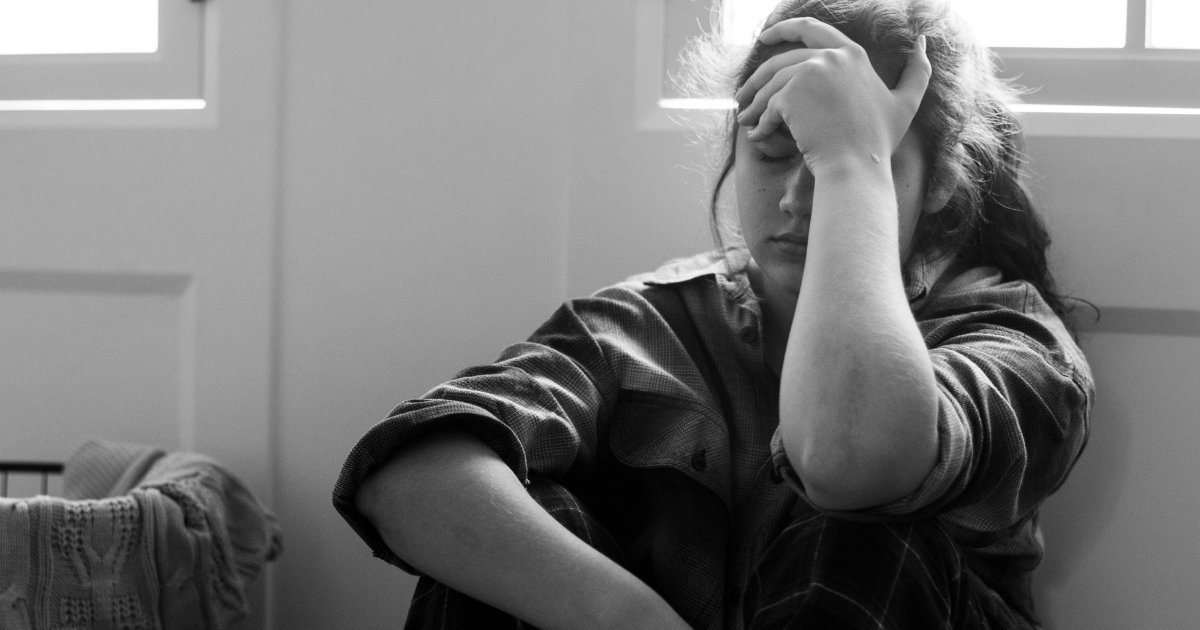Understanding Social Anxiety: A Deep Dive into the Symptoms and Recognition
When Social Situations Become Overwhelming Challenges
Everyone experiences occasional nervousness in social situations. The butterflies before a job interview, the slight awkwardness when meeting new people, or the momentary self-consciousness when speaking in front of a group are all normal human experiences. However, for millions of people worldwide, these feelings intensify into something far more challenging and life-altering.
Social anxiety disorder transforms routine social interactions into sources of intense fear and distress. What others might find mildly uncomfortable becomes genuinely terrifying for those affected by this condition. The anticipation of a simple conversation can trigger the same physiological response as facing a life-threatening situation, leaving individuals feeling trapped by their own fears.
Understanding the symptoms of social anxiety is crucial not only for those who suspect they might be experiencing this condition but also for friends, family members, and colleagues who want to offer meaningful support. Recognition is the first step toward getting appropriate help and beginning the journey toward social freedom and confidence.
The complexity of social anxiety symptoms spans multiple dimensions of human experience, affecting how people think, feel, behave, and physically respond to social situations. This comprehensive understanding helps distinguish between normal social nervousness and a clinical condition that may benefit from professional intervention.
The Emotional Landscape: Internal Experiences of Social Anxiety
The emotional symptoms of social anxiety create an internal storm of fear, worry, and distress that can be invisible to outside observers but devastating to those experiencing it. These emotional responses often begin long before any social interaction occurs and can persist long after the situation has ended.
The Core Fear: Judgment and Evaluation
At the heart of social anxiety lies an intense, persistent fear of negative evaluation by others. This fear goes beyond normal concern about making a good impression and becomes an overwhelming preoccupation with how others perceive every aspect of one’s appearance, behavior, and personality.
Individuals with social anxiety often experience this fear as a certainty rather than a possibility. They don’t simply worry that others might judge them negatively; they feel convinced that others are actively scrutinizing and criticizing them. This perceived judgment feels immediate, harsh, and inescapable.
The fear of evaluation extends to seemingly minor interactions that most people navigate without conscious thought. Ordering food at a restaurant, asking for directions, or making small talk with a neighbor can trigger intense anxiety about saying something foolish or appearing awkward.
Anticipatory Anxiety: When Future Events Create Present Suffering
One of the most debilitating aspects of social anxiety is the anticipatory worry that can begin days, weeks, or even months before a feared social event. This preview anxiety often proves more distressing than the actual situation itself, creating extended periods of suffering over events that may never occur or may pass without incident.
The anticipatory phase involves detailed mental rehearsals of social disasters, with individuals playing out scenarios where they embarrass themselves, say something inappropriate, or become the target of ridicule. These imagined scenarios feel vivid and realistic, generating genuine emotional and physical responses to events that exist only in the mind.
Sleep disturbances commonly accompany anticipatory anxiety, with racing thoughts about upcoming social situations preventing restful sleep. The combination of anxiety and fatigue creates a cycle that makes social situations even more challenging to navigate successfully.
Post-Event Processing: The Aftermath of Social Interaction
After social situations conclude, many people with social anxiety engage in extensive mental post-mortems, analyzing every detail of their interactions with hypercritical scrutiny. This post-event processing often focuses exclusively on perceived mistakes, awkward moments, or signs of disapproval from others.
The analysis can become obsessive, with individuals replaying conversations word by word, examining facial expressions and body language for signs of negative judgment, and catastrophizing about the long-term consequences of minor social missteps.
This rumination serves to reinforce and strengthen social anxiety by highlighting perceived failures while ignoring successful aspects of social interactions. The selective focus on negative elements creates a distorted view of social reality that fuels future anxiety.
Physical Manifestations: When the Body Responds to Social Threat
Social anxiety triggers the body’s fight-or-flight response, designed to protect against physical danger but activated inappropriately in response to social situations. These physical symptoms can be intense, uncomfortable, and often visible to others, creating additional layers of anxiety about the symptoms themselves.
Cardiovascular Responses
The heart becomes a percussion instrument announcing anxiety, often beating so forcefully that individuals worry others can hear or see it. Heart palpitations can feel irregular or skipped, creating additional worry about cardiac health during already stressful social situations.
Blood pressure typically rises during social anxiety episodes, contributing to feelings of pressure in the head and chest. Some people experience visible pulsing in their neck or temples, adding to their self-consciousness about their physical appearance during social interactions.
The intensity of cardiovascular symptoms can be so severe that some individuals seek emergency medical care, convinced they’re experiencing a heart attack during their first panic episodes in social settings.
Autonomic Nervous System Activation
Sweating becomes profuse and often appears suddenly, particularly in visible areas like the face, hands, and underarms. This perspiration feels different from normal sweating, often described as cold and clammy, and can occur regardless of temperature or physical activity level.
The fear of visible sweating can become a central focus of social anxiety, with individuals constantly monitoring their bodies for signs of perspiration and developing elaborate strategies to hide or prevent sweating in social situations.
Trembling and shaking, particularly in the hands and voice, can make simple tasks like writing, drinking, or speaking feel impossible. The visibility of these symptoms creates additional anxiety about others noticing and judging the physical signs of nervousness.
Gastrointestinal Disruption
The digestive system responds powerfully to social stress, often producing immediate and intense symptoms that can be both uncomfortable and embarrassing. Nausea can range from mild queasiness to overwhelming waves that leave individuals worried about vomiting in public.
Stomach cramping, urgent bowel movements, or sudden loss of bladder control create additional fears about embarrassing bodily functions occurring during social situations. These concerns can lead to extensive planning around bathroom access and avoidance of longer social events.
Some individuals experience complete loss of appetite or conversely, nervous eating patterns that fluctuate unpredictably around social situations.
Neurological and Sensory Changes
Dizziness and lightheadedness can make individuals feel unsteady or worried about fainting, particularly problematic in situations where they’re expected to stand or move around. Some people experience tunnel vision or changes in visual perception that make environments feel surreal or threatening.
The phenomenon of “mind going blank” involves sudden inability to think clearly, remember simple information, or find appropriate words during conversations. This cognitive disruption can be particularly distressing for individuals whose professional or academic success depends on verbal communication.
Muscle tension throughout the body can create headaches, jaw pain, and overall physical discomfort that persists beyond the immediate social situation.
Cognitive Patterns: The Thought Processes That Fuel Social Anxiety
The cognitive aspects of social anxiety involve characteristic patterns of thinking that maintain and intensify the condition. These thought patterns often operate automatically and feel completely realistic to the individual experiencing them, even when they’re objectively distorted or irrational.
Catastrophic Thinking Patterns
Individuals with social anxiety tend to automatically assume the worst possible outcomes for social situations. A brief pause in conversation becomes evidence of boring the other person; a neutral facial expression indicates disapproval or judgment; a declined social invitation means permanent rejection.
These catastrophic interpretations feel immediate and certain rather than speculative. The individual doesn’t think “maybe they didn’t like what I said;” they conclude “they definitely think I’m stupid” based on minimal or ambiguous evidence.
The imagined consequences of social missteps become greatly exaggerated, with minor embarrassments transformed into social disasters that will permanently damage relationships, career prospects, or social standing.
Mind Reading and Fortune Telling
Social anxiety often involves the conviction that one can accurately determine what others are thinking, and that these thoughts are invariably negative. Individuals “read” disapproval, boredom, or criticism into neutral expressions and assume their presence is unwelcome or burdensome.
Future-focused anxiety involves predicting social disasters with apparent certainty. Upcoming social events are approached with the assumption that something will go wrong, that embarrassment is inevitable, and that the experience will be overwhelmingly negative.
These predictive thoughts create self-fulfilling prophecies, as the anxiety generated by catastrophic expectations often interferes with natural social functioning, potentially creating the very problems that were feared.
Perfectionism and All-or-Nothing Thinking
Many individuals with social anxiety set impossibly high standards for their social performance, believing they must be fascinating, articulate, and charming at all times. Any deviation from perfect social execution is interpreted as complete failure.
This perfectionist mindset eliminates the middle ground of normal human social interaction, where most people are occasionally awkward, sometimes say the wrong thing, and regularly have conversations that are simply adequate rather than brilliant.
The all-or-nothing perspective extends to self-evaluation, where individuals see themselves as either socially successful or complete social failures, with no recognition of the spectrum of normal social functioning.
Behavioral Responses: How Social Anxiety Shapes Actions
The behavioral symptoms of social anxiety represent the observable actions that individuals take in response to their internal experiences of fear and distress. These behaviors often serve as attempts to manage anxiety but frequently reinforce and maintain the condition over time.
Avoidance Patterns
Complete avoidance represents the most obvious behavioral response, with individuals systematically staying away from social situations that trigger their anxiety. This can range from declining specific invitations to avoiding entire categories of social interaction.
The scope of avoidance can gradually expand over time, beginning with particularly challenging situations like public speaking but eventually encompassing routine social activities like shopping, dining out, or attending work functions.
Partial avoidance involves attending social situations but minimizing participation through strategies like arriving late, leaving early, staying on the periphery of groups, or bringing “safety people” who can manage social interactions on their behalf.
Safety Behaviors and Subtle Avoidance
Safety behaviors are less obvious strategies that individuals use to feel more secure in social situations while technically not avoiding them completely. These might include excessive preparation for conversations, researching attendees before social events, or memorizing topics of discussion.
Physical safety behaviors include positioning near exits for easy escape, using props like phones or drinks to occupy hands and attention, or wearing clothing that conceals sweating or blushing.
Conversational safety behaviors involve steering discussions toward safe topics, deflecting attention away from oneself, or remaining silent rather than risking saying something that might be judged negatively.
Compensatory Behaviors
Some individuals develop behavioral patterns designed to compensate for their perceived social inadequacies. These might include being excessively agreeable to avoid conflict, over-preparing for any social interaction, or becoming hypervigilant about others’ reactions and moods.
People-pleasing behaviors can become extreme, with individuals sacrificing their own needs and preferences to avoid any possibility of social disapproval or conflict.
Some people become paradoxically talkative or outgoing as a way to mask their anxiety, creating an exhausting performance that must be maintained throughout social interactions.
Common Triggers: Situations That Activate Social Anxiety
Understanding the specific situations that commonly trigger social anxiety helps in recognizing patterns and developing targeted coping strategies. While triggers can be highly individual, certain scenarios consistently challenge people with social anxiety.
Performance Situations
Public speaking ranks among the most common and intense triggers, from formal presentations to informal sharing in meetings or classes. The fear encompasses not just the speaking itself but being visually observed by multiple people simultaneously.
Any situation involving being the center of attention can trigger intense anxiety, including birthday celebrations, awards ceremonies, or even positive recognition for achievements.
Performance extends beyond formal speaking to include situations where skills or abilities are on display, such as playing musical instruments, participating in sports, or demonstrating expertise in professional settings.
Interpersonal Interactions
Meeting new people creates anxiety around first impressions, finding appropriate conversation topics, and managing the unpredictability of new social dynamics. The pressure to be likeable and interesting can feel overwhelming.
Dating situations combine multiple anxiety triggers, including physical appearance concerns, conversation pressure, and the high stakes of romantic evaluation.
Conflict or confrontation of any kind, even minor disagreements or the need to assert personal boundaries, can trigger intense anxiety about anger, rejection, or relationship damage.
Everyday Social Situations
Routine interactions that most people navigate automatically can become sources of significant anxiety. Making phone calls, particularly to unfamiliar people or for important matters, can trigger intense preparation anxiety and avoidance.
Eating or drinking in front of others creates concerns about being watched, making mistakes, or having physical symptoms of anxiety become visible during these basic activities.
Using public restrooms, shopping in busy stores, or any situation involving potential interaction with service providers can become challenging when social anxiety is severe.
Professional and Academic Settings
Workplace meetings, particularly those requiring active participation, can trigger anxiety about appearing competent, having valuable contributions, or being judged by colleagues and supervisors.
Networking events designed to facilitate professional connections can feel overwhelming due to their explicitly social nature and the pressure to make positive impressions that could impact career opportunities.
Academic settings involving class participation, group projects, or interactions with professors can significantly impact educational experiences and outcomes.
Distinguishing Social Anxiety from Normal Shyness
Understanding the difference between shyness and social anxiety disorder is crucial for determining when professional help might be beneficial and for developing appropriate self-understanding and treatment approaches.
Characteristics of Normal Shyness
Shyness represents a temperamental trait that involves some discomfort in social situations, particularly with unfamiliar people or in new environments. Shy individuals may feel nervous or self-conscious but can typically function adequately in social settings when necessary.
The discomfort associated with shyness tends to diminish as individuals become more familiar with people or situations. Shy people often have close relationships and can engage socially when they feel comfortable and secure.
Shyness doesn’t typically interfere significantly with life functioning, career advancement, or the ability to meet basic social and professional obligations.
Clinical Social Anxiety Disorder
Social anxiety disorder involves intense, persistent fear that significantly impairs functioning across multiple life domains. The anxiety is typically disproportionate to the actual social situation and doesn’t diminish simply through repeated exposure.
The impairment extends to important life areas including work, education, relationships, and personal goals. Individuals may turn down job opportunities, avoid educational advancement, or remain socially isolated due to their anxiety.
The distress associated with social anxiety disorder is typically intense and persistent, causing significant emotional suffering even when individuals aren’t in social situations due to anticipatory anxiety and post-event processing.
When Professional Help Is Warranted
Professional consultation should be considered when social anxiety significantly interferes with daily functioning, prevents pursuit of important goals, or causes substantial emotional distress.
If avoidance behaviors are limiting life opportunities, preventing relationship formation, or interfering with work or educational performance, professional treatment can provide valuable support and skills.
The presence of additional mental health symptoms such as depression, panic attacks, or substance use as coping mechanisms indicates the need for comprehensive professional evaluation and treatment.
The Path Forward: Recognition as the First Step
Understanding social anxiety symptoms represents the crucial first step in addressing this challenging but highly treatable condition. Recognition allows individuals to move from self-blame and confusion toward self-compassion and effective action.
Social anxiety disorder affects millions of people worldwide, and effective treatments including therapy, medication, and self-help strategies have helped countless individuals reclaim their social confidence and freedom.
The symptoms of social anxiety, while distressing, are not permanent fixtures of personality or character. They represent learned responses that can be unlearned and replaced with healthier patterns of thinking, feeling, and behaving in social situations.
Professional help is available and effective, offering hope for individuals whose social anxiety has limited their life experiences and opportunities. The journey from social fear to social confidence is challenging but entirely achievable with appropriate support and commitment to the recovery process.
Remember that experiencing social anxiety symptoms doesn’t reflect personal weakness or character flaws. It indicates a common human condition that responds well to understanding, support, and appropriate intervention. The courage to recognize and address social anxiety represents the beginning of a journey toward greater freedom, confidence, and life satisfaction.







